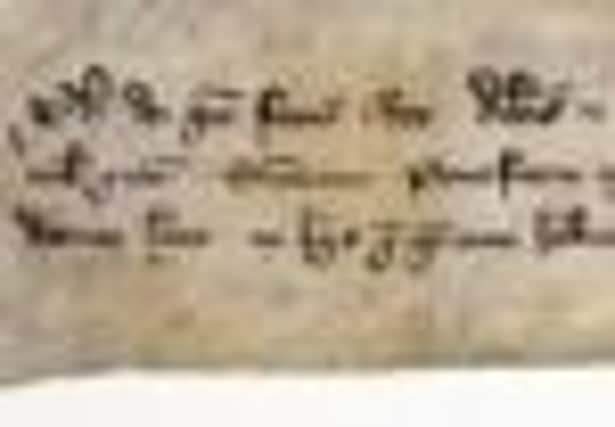Fragile letter stolen from braveheart on show for short time


But an ancient letter – said to have been snatched from William Wallace when he was captured by the English – is to go on display in Edinburgh this summer.
It is believed to have been written by King Philip IV of France to grant Scotland’s independence braveheart safe passage to visit the Pope in 1300.
Advertisement
Hide AdAdvertisement
Hide AdThe letter has been held in England since being discovered in the Tower of London in the 1830s. It is now on long-term loan to the National Records of Scotland after an agreement was reached with The National Archives at Kew in London.
It will go on display to the public in the main foyer of the Scottish Parliament for three weeks in August, alongside another document, known as the Lubeck Letter, sent in Wallace’s name shortly after his victory over the English at the Battle of Stirling Bridge in 1297 to tell European trading partners that Scottish ports were once again open for business.
Both letters are fragile and can only go on display under controlled lighting for a very limited period every few years.
Culture Secretary Fiona Hyslop said: “I am delighted to welcome the Wallace letter back to Scotland. It is one of the few surviving artefacts with a direct link to William Wallace and a fascinating fragment of our nation’s history.”
She said the display of the two historic letters side by side would be “a once-in-a-lifetime opportunity to view together the only two surviving documents directly connected to William Wallace”.
The Wallace letter is addressed to French agents in Rome commanding them to ask Pope Boniface VIII to support Wallace in unspecified business.
It urges the pope to “hold our loved William le Walois of Scotland, knight, recommended to his favour”.
But the nature of the business Wallace hoped to discuss with the Pope is unclear, and no evidence exists that Wallace ever made the trip.
Advertisement
Hide AdAdvertisement
Hide AdHow the letter fell into English hands is also unclear. Most experts are said to believe it was snatched from Wallace’s hands when he was arrested for treason in August 1305.
National Records of Scotland has reached agreement with The National Archives in London to borrow the Wallace letter from 2012 to 2014, to go on display in both years.
Duncan Fenton from the Society of William Wallace said: “We have been campaigning for years for this letter to be returned to Scotland and this is a fantastic result – not just for us, but for the Scottish people who will be able to see this document with their own eyes and feel a connection to William Wallace. We do not have a lot of tangible links with Wallace as most of the documentation has been destroyed, so to have something that Wallace actually touched is a massive boost for Scotland.”